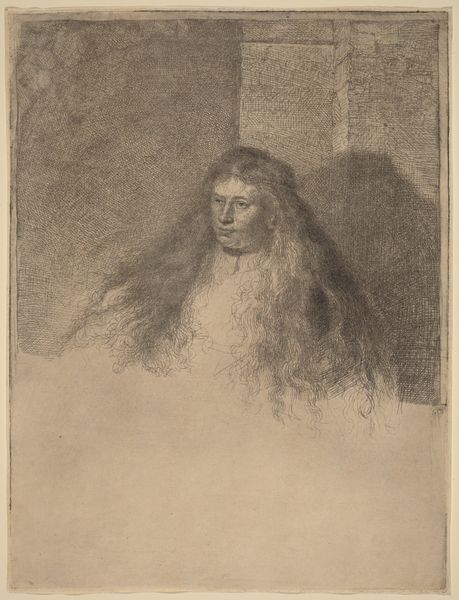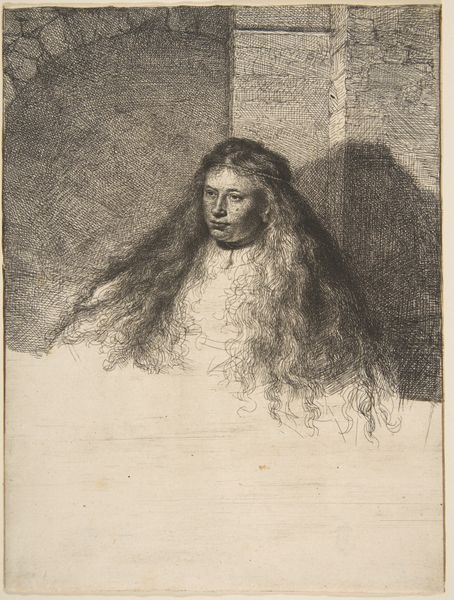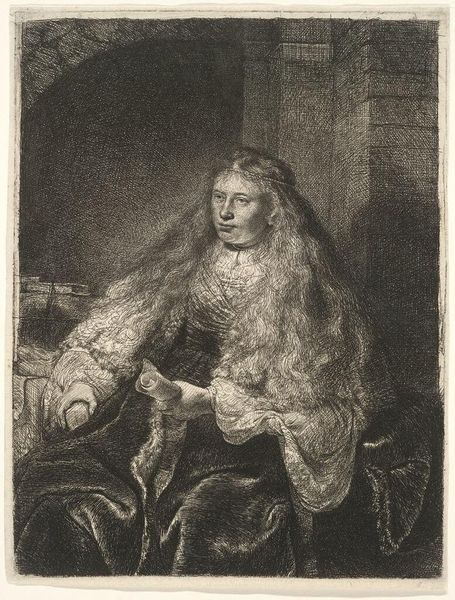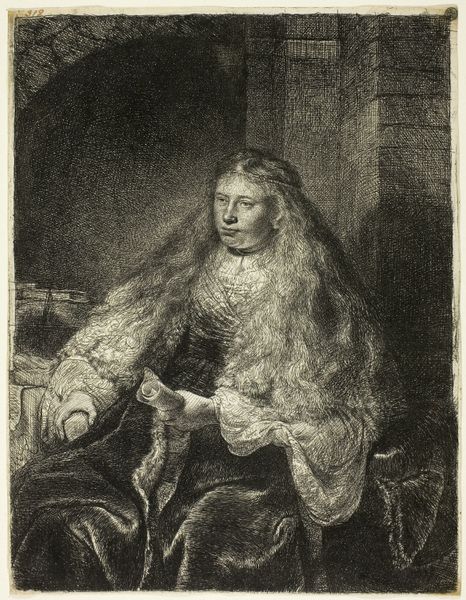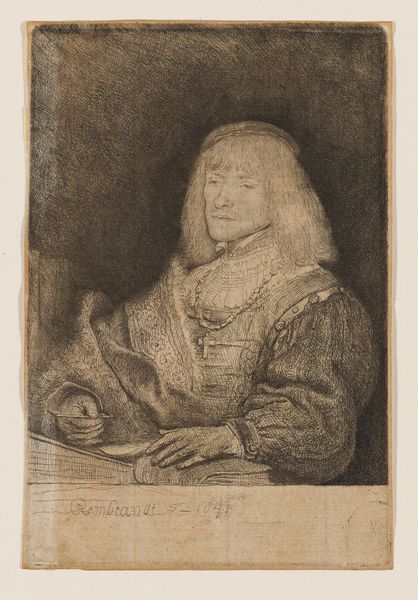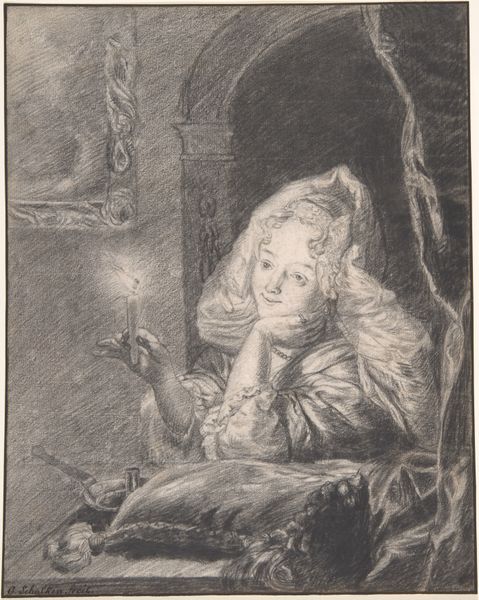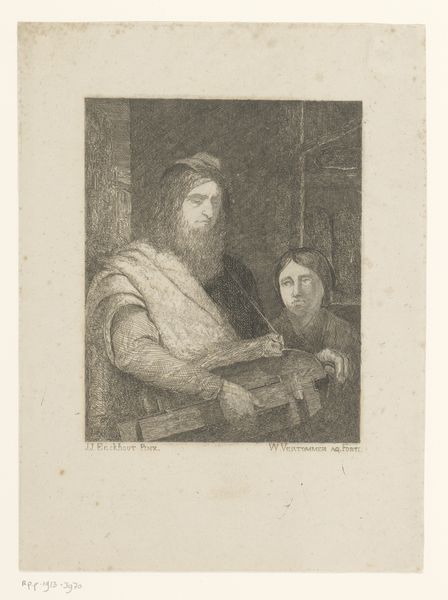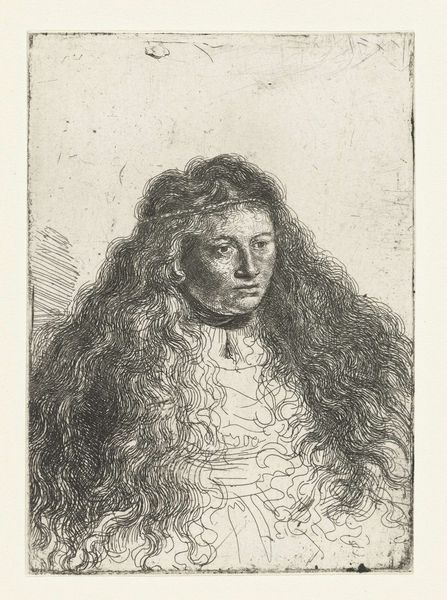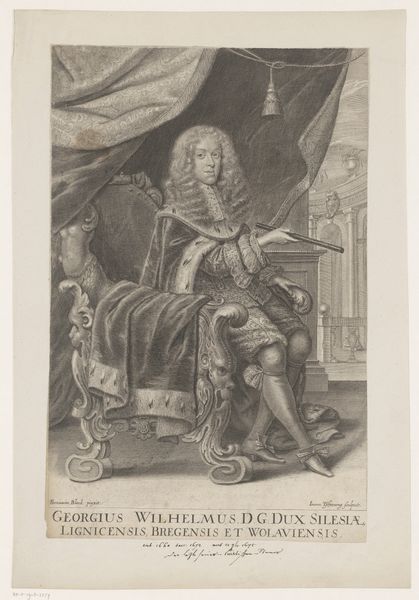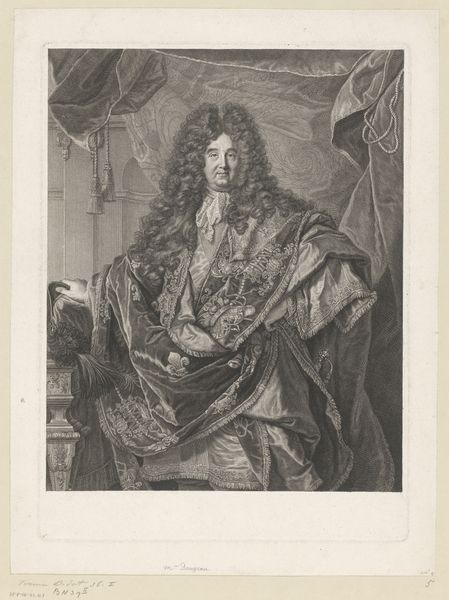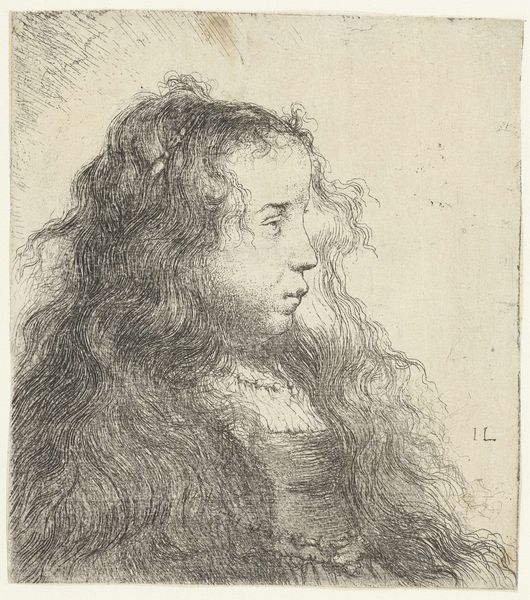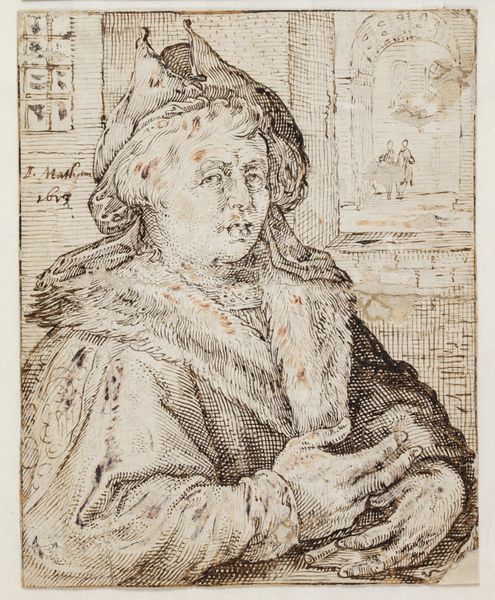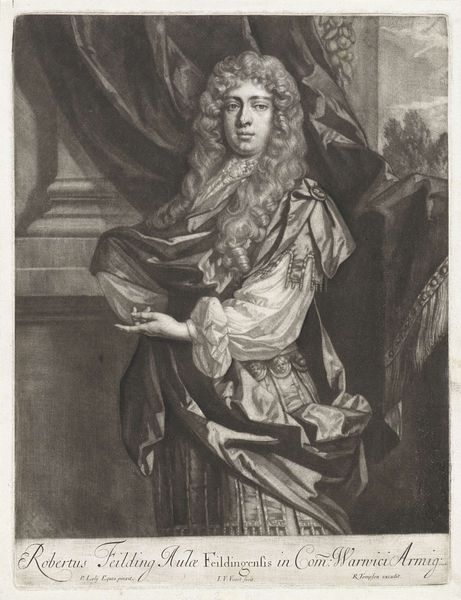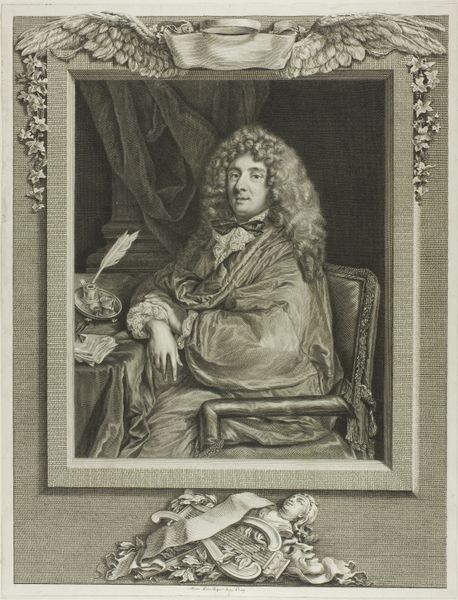
print, etching
#
portrait
#
baroque
#
dutch-golden-age
# print
#
etching
#
figuration
#
portrait drawing
Dimensions: 8 3/4 x 6 5/8 in. (22.2 x 16.9 cm) (plate)
Copyright: Public Domain
Curator: Here we see "Girl with Hair Falling on Her Shoulders," an etching produced by Rembrandt van Rijn around 1635, now held at the Minneapolis Institute of Art. Editor: The first thing that strikes me is the density of the line work. It almost feels like I'm looking at fur more than hair at first glance, a deliberate, almost textural decision on Rembrandt's part. Curator: Yes, and think about what that suggests. Hair, traditionally a symbol of freedom, sensuality, even untamed power—here it's rendered as a palpable, almost weighty substance. The density traps the figure, physically and symbolically. Consider too, how etching allows for such layered detail and controlled tonal variation through acid-resist techniques. Editor: The materiality of the printmaking is fascinating. You can imagine him meticulously building those tones, scraping, and biting the plate with acid. Each stage yields unique visual properties. You know, this departs sharply from painting. I wonder what kind of paper was used for these impressions, as it would subtly influence the ink. Curator: Good question! The symbolism and technique coalesce here. The tangible, crafted nature of the print enhances this feeling of emotional interiority. There's an intentionality behind every line; it asks us to actively participate in deciphering the story. There’s a real interplay between freedom and constraint; both materially and thematically. Editor: I agree completely. And seeing those dense blacks gives a distinct Baroque feeling – theatrical and somber all at once. Think of how dependent etching is on readily accessible materials – metal, acid, paper, ink. So crucial for the dissemination of imagery within and between emerging mercantile centers. Curator: I'd not considered the distribution context quite like that, but now that you mention it...This becomes something almost radical, an almost democratic distribution of powerful images enabled through those materials. We now recognize it not just as a portrait of an unknown woman but as part of a larger web of cultural exchange. Editor: Right? When we think about materials we immediately think about labor too, from the person who created the print all the way back to the metal mine where the materials came from to begin with. Curator: Exactly. Thinking about materials helps contextualize its production and, importantly, the access afforded by those methods at that time. Editor: It redefines traditional, and frankly hierarchical, art-historical divisions based solely on style or "genius". Curator: By considering both symbolism and production, our understanding deepens far beyond the immediate image of the “girl.”
Comments
No comments
Be the first to comment and join the conversation on the ultimate creative platform.
